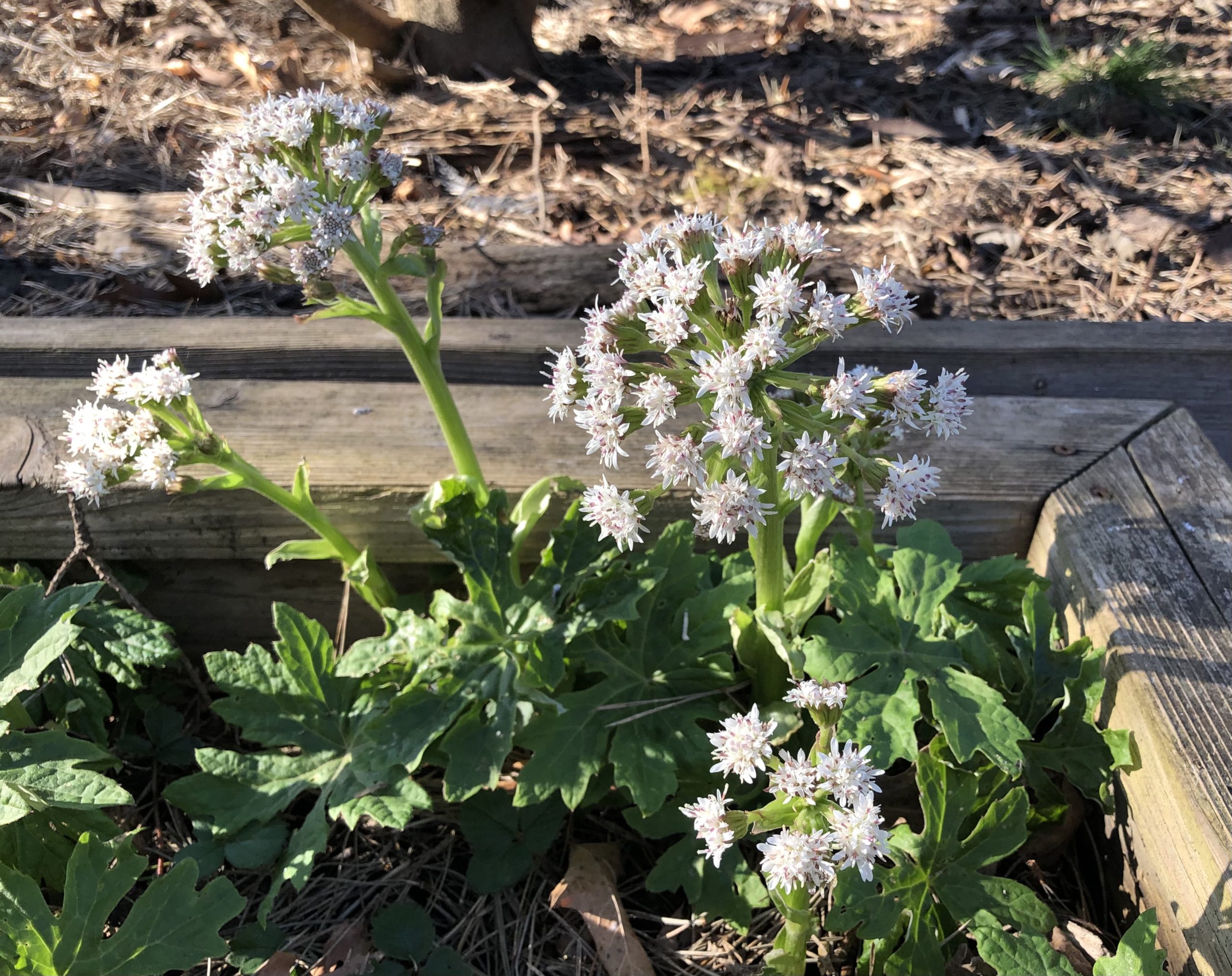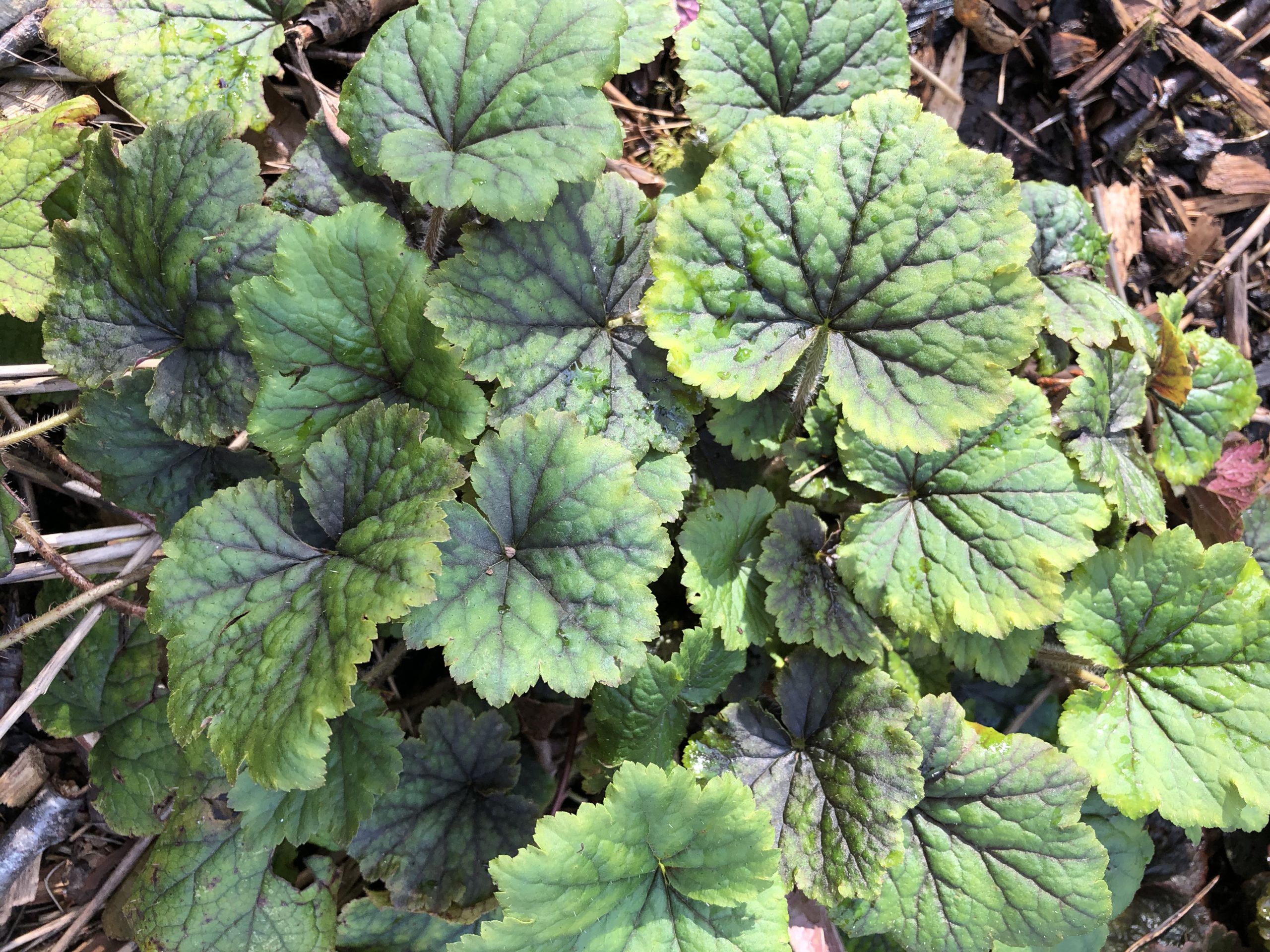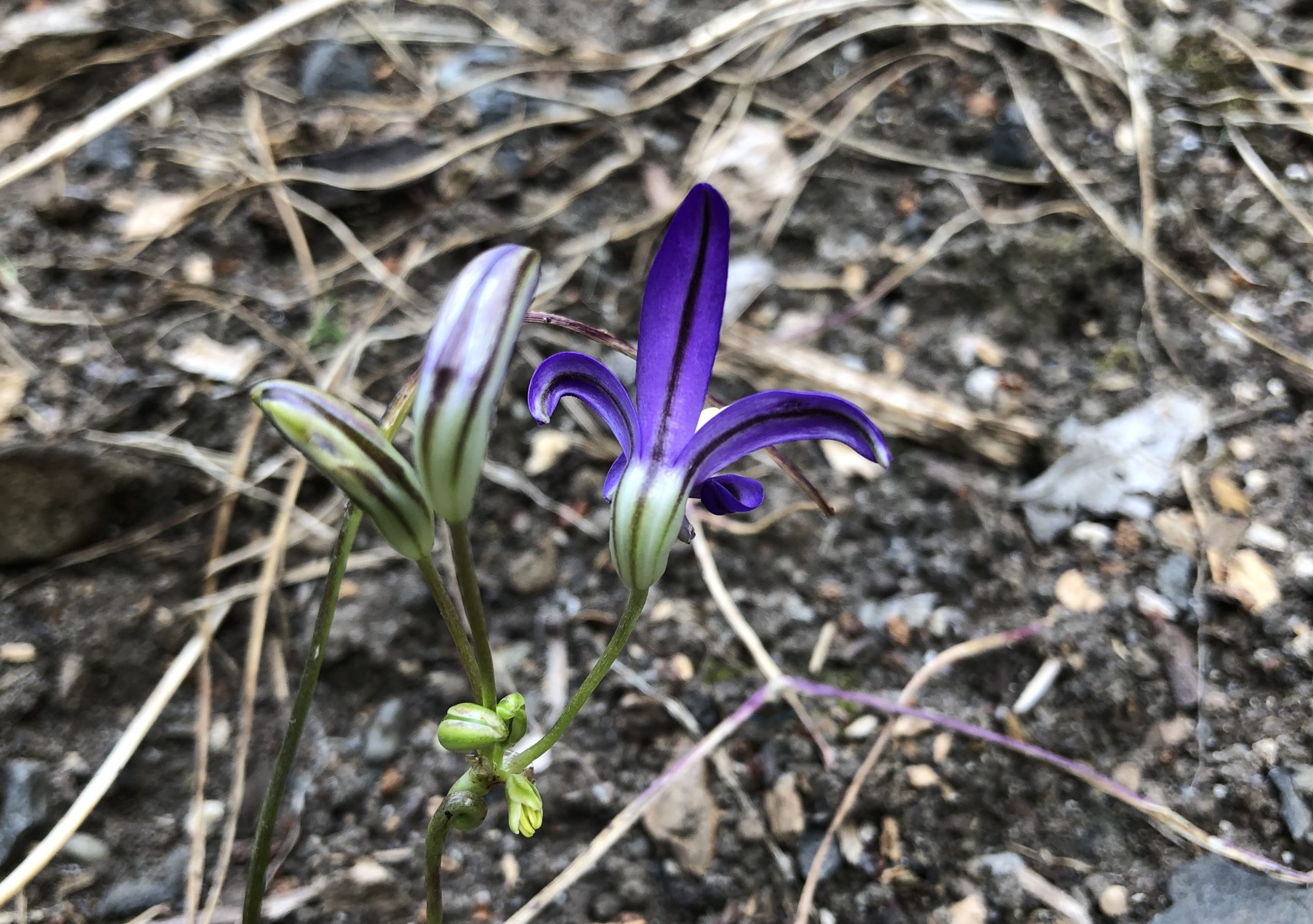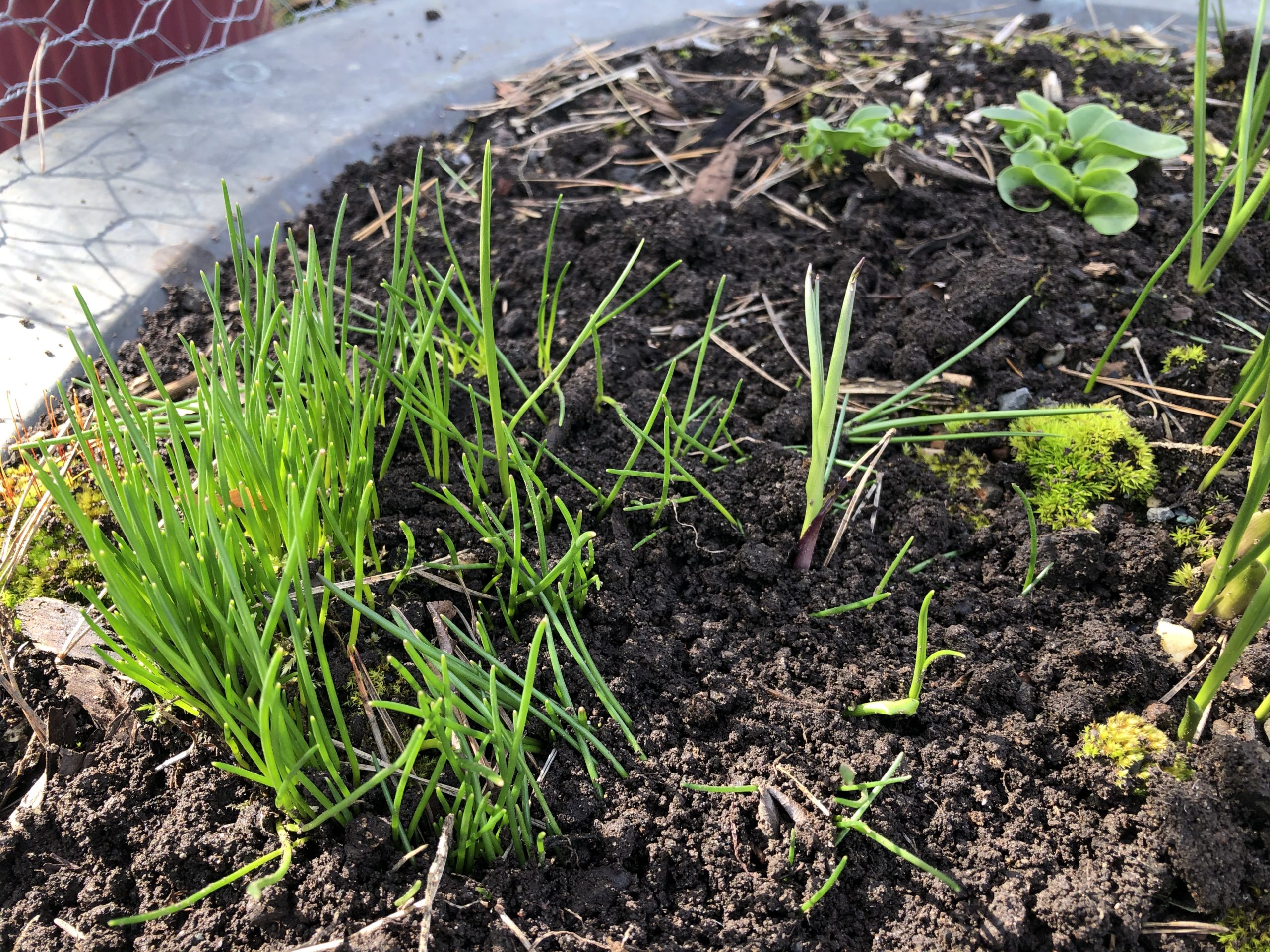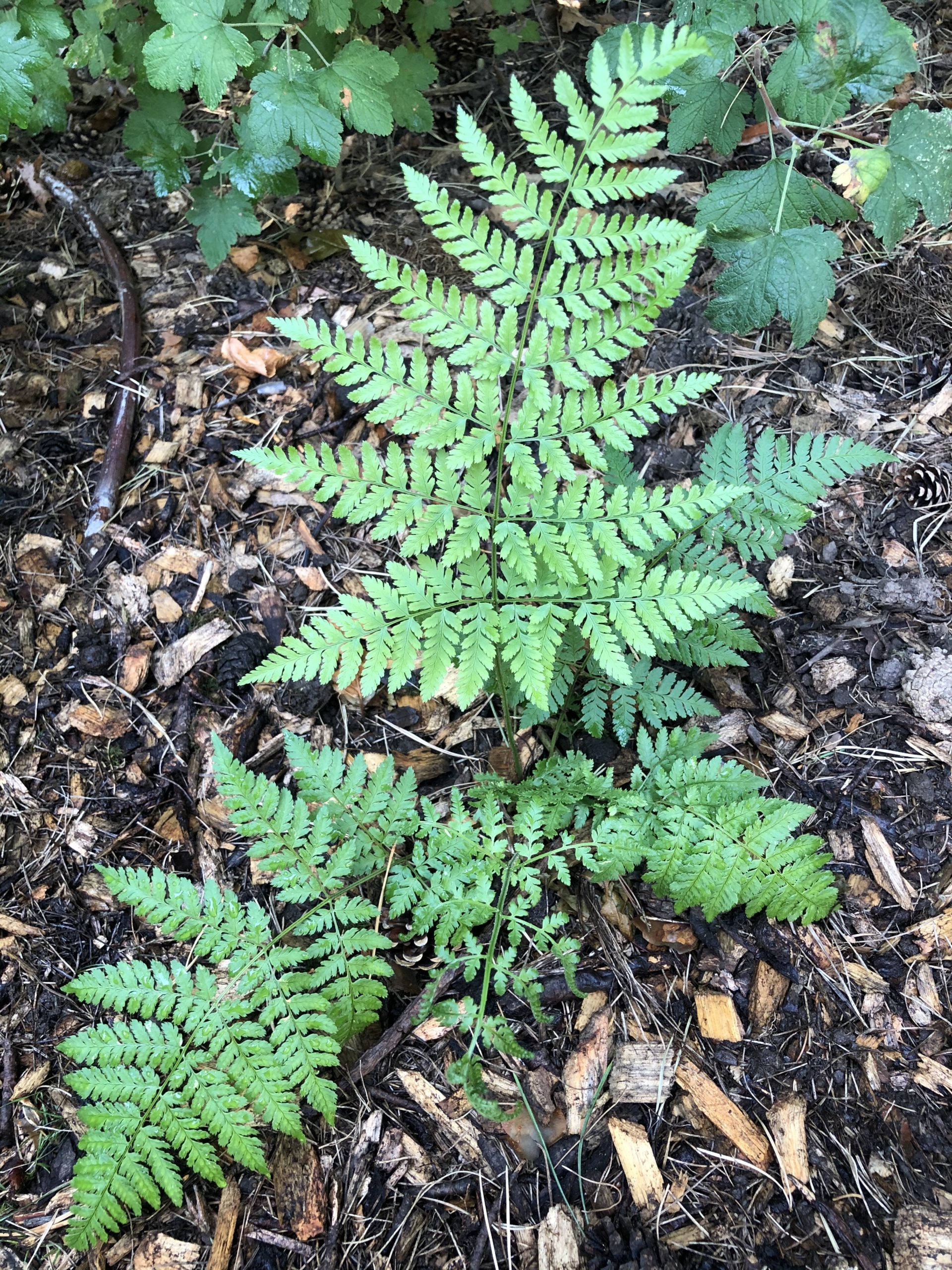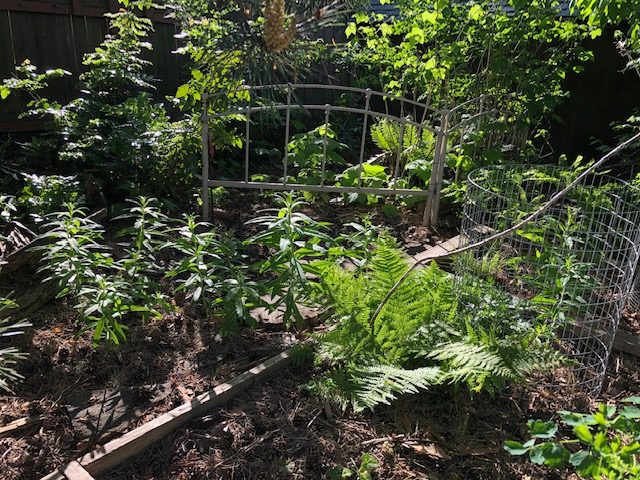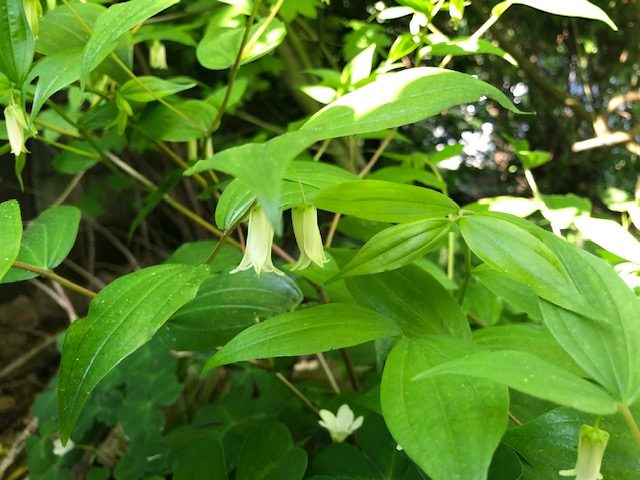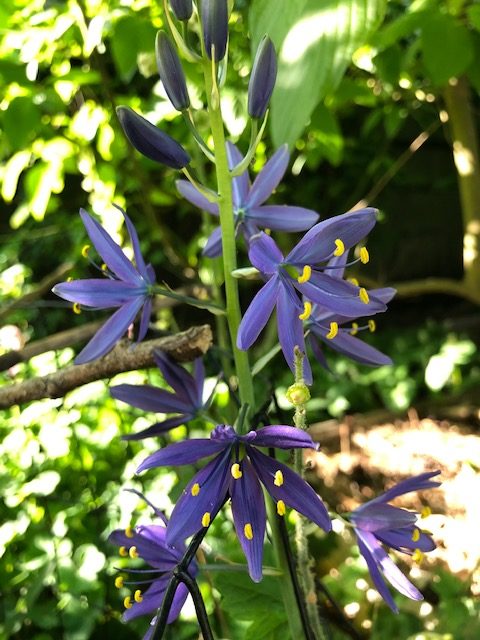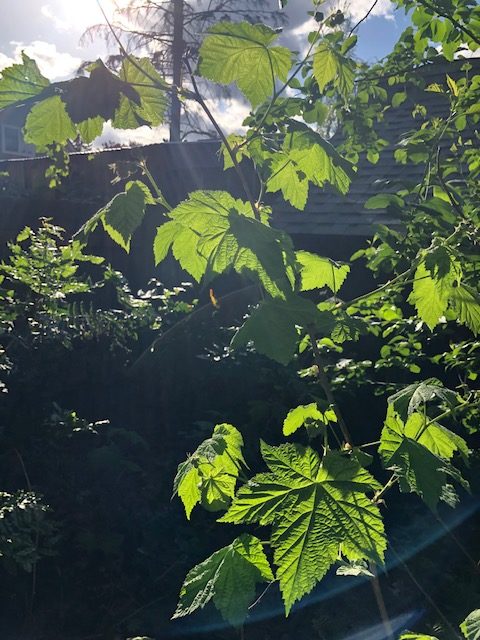Site Information: Located in the St. John’s neighborhood of North Portland, Caroline’s site conditions are part sun.
What inspired you to enroll in the Backyard Habitat Certification Program?
I think I heard a presentation about BHCP that talked about having many individual yards add up to a real increase in much-needed wildlife habitat.
How would you describe your habitat?
Since much of my yard is shady, with broken sun, mostly I’m trying to emulate a woodland type of setting, including those in Maryland where I grew up. I have some grass and non-native plants in front, plus a veggie area and some lawn in back, with a large (and growing) all-native area after that.
What are your top three favorite native plants and why do you love them?
I love my false lily of the valley or Maianthemum dilatatum because it’s found as understory at Nob Hill, an oak woodland in St Helens, OR where I am a volunteer steward.
I love the Triteleia hyacinthina or fool’s onion for the same reason, plus it just showed up, so it must have come in on some soil from St Helens.
My third favorite is a little harvest lily or Brodiaea coronaria, also with the same story. It appeared in a container where I’m growing common camas that was uprooted by road construction in St Helens. I think it’s uncommon to have in a yard. But it’s hard to single out just three favorites!
What changes have you observed as a result of creating habitat?
It’s so fun having a bird bath; technically, I have four of them, and I use rainwater as much as possible. In winter, I add two suet feeders, and I’ve never seen so many birds in my yard, including northern flickers, woodpeckers, crows, jays and smaller birds like junkies and chickadees. Hummingbirds come often to visit my flowering red currant and native honeysuckle, Lonicera ciliosa. There seem to be a lot of insects, mainly bees, on the artichoke and mint flowers.
What were the two most significant challenges you encountered while creating habitat, and how did you address them?
The yard was in poor shape when I bought the house, with plenty of trash and weeds. There was no one single issue; I’ve just had a lot of fun working on it steadily, as much as daylight and weather permit.
What resources did you find especially helpful?
- Wildflowers of the Pacific Northwest by Turner and Gustafson is my go-to book.
- I’m also inspired by Doug Tallamy and Rick Darke, although they write more about east coast and mid-west.
- East Multnomah Soil and Water CD has useful free classes, and I love observing native plants in natural settings.
How do you enjoy your Backyard Habitat throughout the different seasons? What are its highlights in each season?
Winter is a time of sleeping and dormancy in plants; the suet feeders bring in a ton of birds. Spring is the exciting time when so many plants “come back” and re/emerge. Summer is a great time to be outdoors on warm summer evenings, enjoying it all, but I have to keep an eye out for skunks, raccoons and possums. Fall is a time to rake leaves for putting into compost and to apply to garden beds.
What part of your backyard habitat are you most proud of?
I have a “prairie in a bowl” made from an old fire pit; I keep it carefully screened so squirrels don’t eat the camas bulbs and destroy it. I have a lot of native shrubs around the perimeter that are becoming mature; this spring, my osoberry has grown large enough to provide a lot of fragrance, plus a nice amount of bright green color. I have some less common ferns, coast wood fern / Dryopteris arguta, and oak fern or Gymnocarpium dryopteris. I planted Mahonia nervosa on my front slope so I don’t have to mow there, and it’s coming along well. I have even started naturescaping in my neighbor’s shady side yard, with her permission.
Is there anything else you’d like to add about your journey?
I believe viewing native plants in their natural setting is a great way to learn where and how they like to grow. I try to make my yard a microcosm of nature. We are fortunate to have many good native plant nurseries in our area. Right plant, right place is important.

